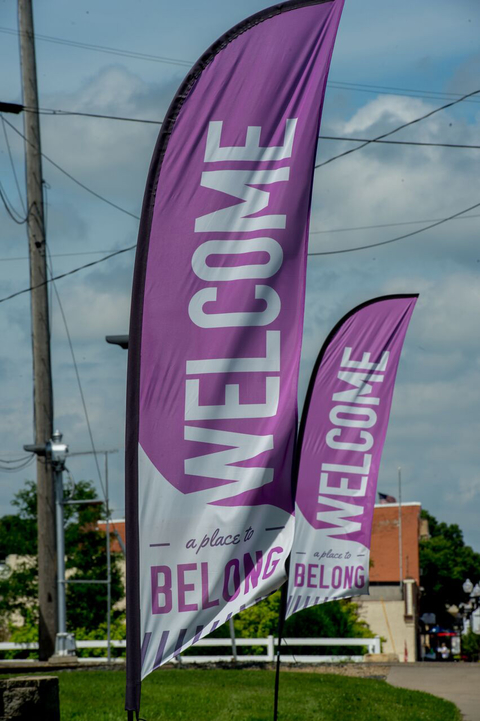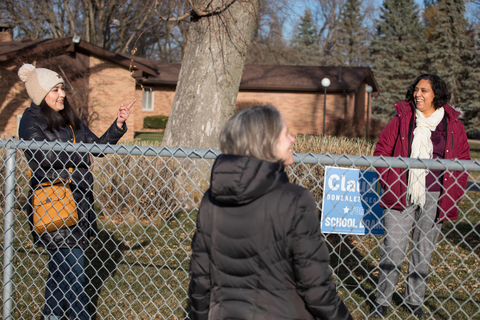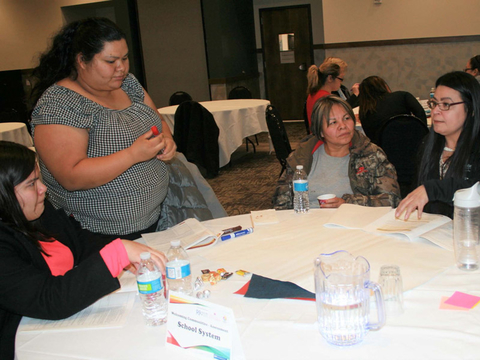Sue Kimmel wanted the city of New Ulm to be a thriving, diverse community. But she was concerned with its lack of population growth — and wanted to understand possible barriers to the town’s expansion.
When Kimmel learned community members from two other cities in Brown County planned to meet to discuss engaging more inclusive community practices, she knew she wanted to be a part of the conversation.
But knowing how ready a community is to take purposeful action on diversity and inclusion efforts can be tricky. In fall 2019, Extension tested its Welcoming Communities Assessment in the towns of New Ulm, Sleepy Eye, and Springfield.
“We had created different assessments around more general ideas of community readiness, but never one only on equity and inclusion,” says Extension Evaluation and Research Specialist Scott Chazdon.
“The Welcoming Communities Assessment helps community members gain a baseline, action-oriented understanding of how inclusive different sectors of their community are for immigrants, refugees, and people of color.”
— Scott Chazdon
A need for more diverse and inclusive communities
The Welcoming Communities Assessment emerged from a community cohort program called the Rural Equity Learning Community (RELC). Cohort members wanted a way to determine how prepared communities are to engage in diversity and inclusion efforts. The resulting assessment was a collaboration between Extension, the Regional Nine Development Commission, and RELC, says Chazdon. A new cohort program also emerged called the Welcoming Communities Project.
“We knew a lot of work was being done in the metro area but not in Greater Minnesota about how to take a small community and make it more welcoming to the new demographics moving into the community,” says Julie Hawker, a diversity, equity, and inclusion (DEI) consultant who partnered with Extension to deliver the assessment to the three communities in Brown County.
How the assessment works
The assessment includes questions to measure six dimensions of inclusion:
- Awareness of the importance of inclusion
- Engagement of diverse groups in community activities
- Resources to address inclusion
- Leadership energy to promote inclusion
- Power-sharing in planning and decision making
- Policies and practices that promote inclusion
Its design also focuses on seven sectors of community life, including:
- School systems
- Health care systems
- Law enforcement
- Nonprofit sectors
- Religious organizations
- Business or chambers
- Local government
“The intent is to provide actionable information about which sectors were leading or lagging in their diversity and inclusion efforts,” explains Chazdon.
Community results and impact
About 75-80 community members from New Ulm, Sleepy Eye, and Springfield were the first to participate in the assessment, says Hawker. “A month later, we provided the results, and they could see where the higher and lower levels of inclusion were.”
Kimmel says New Ulm’s health care and school systems reflected the highest levels of inclusion and were also more likely to promote it in a systematic manner. “[They] had a deeper understanding of diversity, equity, and inclusion and were leading in their adaptation to change.”
Across all three communities, sectors with lower levels of inclusion included businesses, nonprofits, and local government.
To address sectors lagging in inclusion efforts, Kimmel and fellow New Ulm community members participated in monthly training sessions provided by the Welcoming Communities Project. “We began to organize activities, such as family table to share our family stories and traditional foods, book studies, and Zoom learning sessions,” she says. “Information learned during our meetings was [also] shared through local newspaper articles.”
In Springfield, a human rights commission was created, inspired by one already in New Ulm. “Community members are creating networks with one another and know they’re not standing alone,” says Hawker.
An example of overall community findings
Welcoming and embracing differences
Currently, Extension is conducting the Welcoming Communities Assessment in the towns of Blue Earth and Madelia. The assessment has also been translated into Spanish, which is a big improvement, says Chazdon.
As the demographics of communities across Minnesota continue to change, it becomes increasingly more important to welcome and honor the differences among all community members. “The more contact you have with people who are different than you, the more comfortable you become with them,” says Chazdon. “When there’s more contact, there’s more progress.”
“If we want our community to grow, citizens must be heard, welcomed, and provided an equal footing so all can succeed.”
— Sue Kimmel
Kimmel knows this belief is vital to a thriving, diverse New Ulm.





